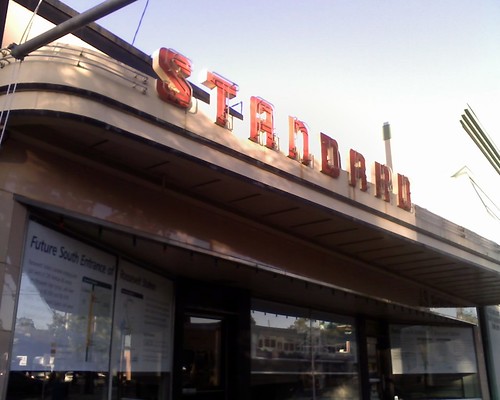The PTSA at Bryant Elementary School (3311 NE 60th St) is holding a benefit concert for relief efforts in Japan on Saturday, April 30, from 4-6PM.
From this week’s Bryant Weekly:
The concert will be featuring Bryant’s taiko drumming group and Bryant’s very own choir and hand bell group. There will also be a traditional dance troupe at the event. We would love for you all to come!
Admission is free, however we will gladly accept any donations for the relief effort in Japan. All proceeds will go to the non-profit Peace Winds organization, which is providing emergency relief to the disaster victims in northern Japan. We hope to see you there as we join our hearts and minds in helping the people of Japan recover their beautiful country — mourning the country’s losses, but also celebrating its recovery.
ArtRise Dance will be one of the groups performing as well.
Peace Winds America is an organization which seeks to “reduce the high human, economic and political costs of natural disasters in the Asia Pacific.” Their offices are located in the Eastlake neighborhood.
Thank you to Matthew and the weekly Bryant Elementary School e-newsletter for the information.


















Fate of old Fire Station 38 to be decided by City Council; public comment period begins
Now that the new Fire Station 38 (4004 NE 55th St) fully operational, it’s time to determine the fate of the old one (5503 33rd Ave NE).
Your new house?
From today’s press release (from the City of Seattle’s Department of Finance and Administrative Services; emphasis mine):
If sold, the Fire Facilities and Emergency Response Levy Fund (which paid for the new fire station’s construction) could be refilled to the tune of a million dollars — the property was appraised at just over a million dollars in 2009, according to King County property records.
The building itself was granted landmark status in 2004; therefore, changes in the structure are limited and the city’s Historic Preservation Program must be contacted prior. (Read the full Seattle Fire Station No. 38 Landmark Nomination Report (pdf; 26 pages!) for more information on the history of the Fire Station 38 and the surrounding neighborhood.)
Comments about the sale of old Fire Station 38 are due by May 18, and will be incorporated into documentation presented to the City Council. Send your comments to Rich Gholaghong via phone (684â€0701), by eâ€mail (richard.gholaghong@seattle.gov) or by regular mail (Rich Gholaghong, FAS Real Estate Services, P.O. Box 94689, Seattle WA 98124â€4689).
__________________
At the FAS’s Real Estate Services’ homepage, a variety of documents detailing the sale recommendations and next steps are available. I have also linked to them here, for your convenience: